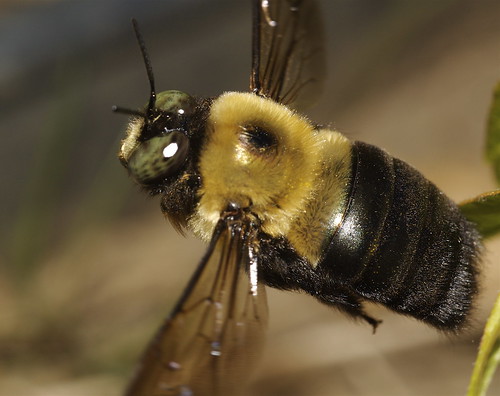It's tricky to get a good shot of an insect in mid-flight or any sort of closeup shot, for that matter. Getting a good shot often involves a bit of understanding of insect behaviour. Here are a few categories I've found.
- Insects that are really tired or are trying to warm up in the sun tend to let you get closer. This is especially true of spring insects like bee flies whose ability to function in cool spring air is only marginally possible. The fact that they're out at all is driven by a reproductive or foraging need. In the case of bee flies, they need to lay their eggs near those of solitary wasps so that their larvae can locate the wasp larvae and eat them.
- Insects that are busy mating often ignore pretty much everything going on around them in order to mate (thus, the proliferation of mating bug shots).
- Insects eating are less likely to be shy than those foraging (thus the dining spider and bee and butterly shots you see).
- Insects that think no one sees them and depend on immobility for safety tend to stay put (I just posted a picture of a well-camouflaged crab spider on a fruit tree displaying this behaviour).
